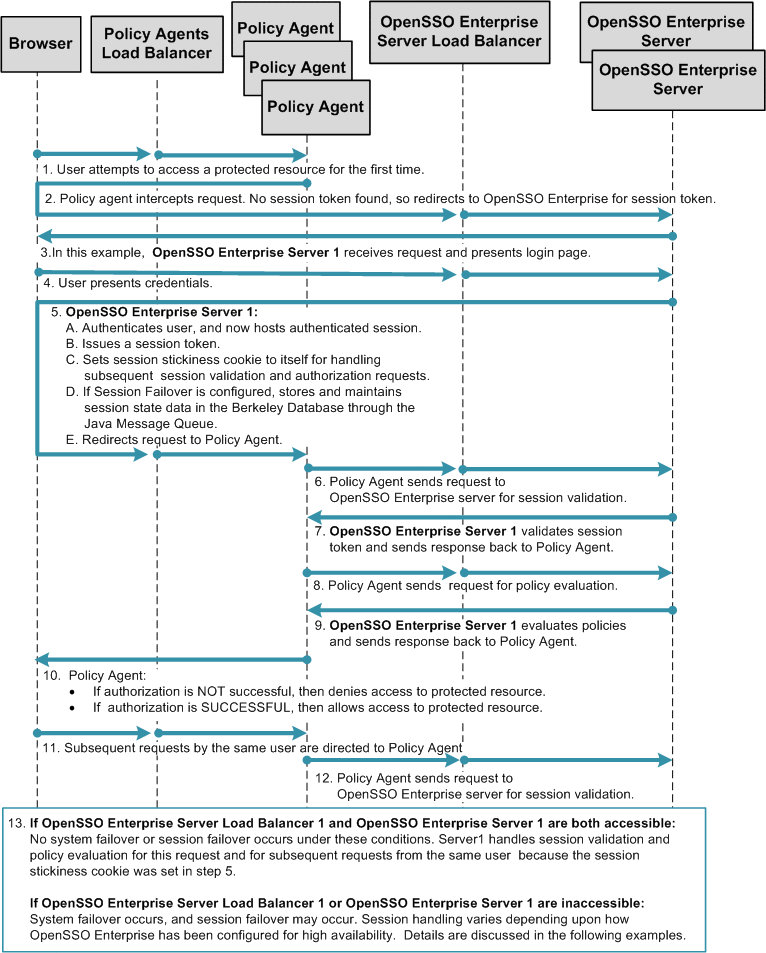Understanding a Typical High-Availability Transaction
In any transaction, OpenSSO Enterprise must determine three things:
-
Is a valid user session token present?
-
Is the user authenticated?
-
Is the user authorized?
At any time during the transaction, if the OpenSSO Enterprise server or the OpenSSO Enterprise Policy Agent is unable to access the information required to determine these three things, then system failover or session failover may occur.
Figure 17–2 illustrates the first part of a typical high-availability process flow. In the figure, a user attempts to access a protected resource and is successfully authenticated. No system failover or session failover occurs in this first transaction.
The second part of the process flow describes how sessions are handled during subsequent requests by the same user. This second part of the process flow is influenced by two factors:
-
How OpenSSO Enterprise is configured for high availability
-
Availability of load balancers and servers
The following figure illustrates a user's first request in a typical high-availability transaction. Process flows for subsequent requests by the same user are presented in detail, and discussed along with their respective configuration examples, in the following sections.
Figure 17–2 Process Flow for High Availability (part 1)

- © 2010, Oracle Corporation and/or its affiliates
